
I don’t want to sound like a conspiracy theorist, but maybe my blog went down yesterday because Dark Forces (aka, Russian hackers) may have objected to this post on the problems of the European Union. George Friedman runs Stratfor, a private intelligence company with a client list of governments and corporations. Friedman presents a detailed history of Europe leading up to the forming of the European Union. His parents fled Hungry and after an incredible journey, settled in the United States. Friedman developed a fascination with Europe based on the stories his mother and father told him. He has visited Europe dozens of times. Friedman believes the European Union is inherently unstable. History and centuries of conflict trump the European dream of unity and prosperity. Of course, if the European Union breaks up–and with the BREXIT crisis this looks more likely–the aftermath will affect the United States. The Russians, of course, would be the biggest beneficiaries of the collapse of the European Union. If you’re interested in global politics, Flashpoints provides a detailed analysis of the problems ahead. Highly recommended. GRADE: A
TABLE OF CONTENTS:
List of Illustratoins
Preface
PART ONE: European exceptionalism
A European life
Europe’s assault on the world
The fragmentation of the European mind
PART TWO: Thirty-one years
Slaughter
Exhaustion
The American origins of European integration
Crisis and division
PART THREE: Flashpoints
The wars of Maastricht
The German question once more
Mainland and peninsula
Russia and its borderlands
France, Germany, and their ancient borderlands
Mediterranean Europe between Islam and Germany
Turkey on the edge
Britain.
Category Archives: Uncategorized
CAFE SOCIETY
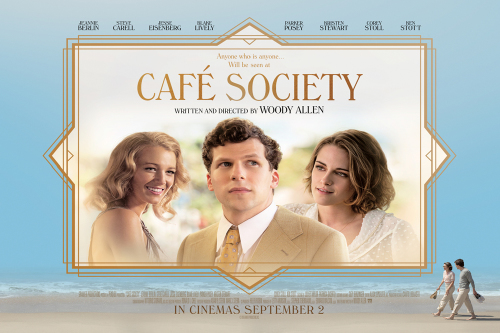
I’d be willing to bet that this Woody Allen film has the largest body-count of any of his films. But, despite the sporadic violence, Cafe Society is a mediation on Love. Beautifully filmed by cinematographer Vittorio Storaro, who filmed Last Tango in Paris, Apocalypse, Now, and Reds. Jesse Eisenberg plays a young man who ends up working for his uncle, a Hollywood agent. He meets stars, but falls for an office girl. Complications result. Jesse Eisenberg returns to New York City and runs a night club with his gangster brother. Complications ensue. The Past forces Jesse Eisenberg’s character to ponder his choices in life and in love. This is a pleasant movie, but no more. GRADE: B
SMART MOM, RICH MOM: HOW TO BUILD WEALTH WHILE RAISING A FAMILY By Kimberly Palmer
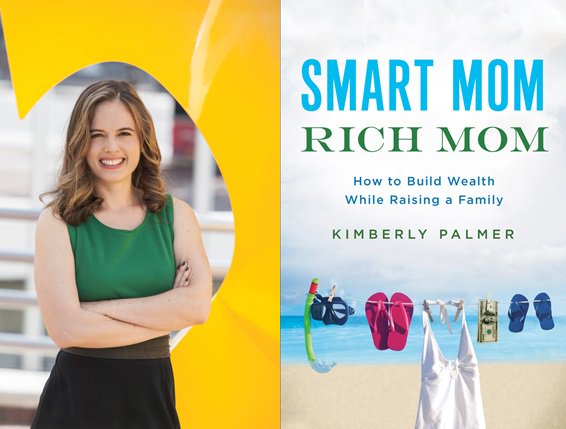
Kimberly Palmer was the senior money editor at US NEWS & WORLD REPORT for nine years. She focuses on financial issues that impact women–having a baby, getting a divorce–and shows how to navigate the problems these situations present. I like the entrepreneurial spirit of this book. Kimberly Palmer says women’s financial issues don’t get the priory they deserve in today’s economy. Women will control two-thirds of the U.S. economy by 2050. Yet Palmer shows how woman continue to make “money mistakes” in every stage of their lives from bad marriages, to over-spending, buying the wrong house, not saving for retirement, and not focusing enough on health care. If you’re a woman–or you live with a woman–this book is full of excellent advice and insightful information. Making good financial choices, based on accurate information, can make a huge difference between happiness and despair. GRADE: A
TABLE OF CONTENTS:
Introduction: Into Motherhood
One: Save (And Spend) Like a Mother
Two: Owning It
Three: Timing is Everything
Four: Like a Boss
Five: Investing Mamas
Six: Playing Defense
Seven: Stuck in the Middle
Eight: Model Moms
Nine: Back to You
Ten: Returning to the Nest
Epilogue: More Than Money
The Smart Mom, Rich Mom Handbook
Notes
Index
JASON BOURNE
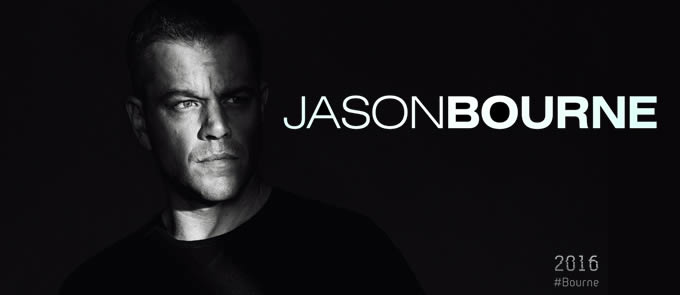
It’s been nine years since Matt Damon performed as “Jason Bourne” so I wondered if age might weigh on the character. Actually, age weighs on CIA Director and Bad Guy: Tommy Lee Jones. Director Paul Greengrass loves close-ups of Tommy Lee Jones with all of his wrinkles, creases, bumps, and blotches. Jones is 69 but looks like he’s 100 in this movie! Jason Bourne has been off the grid for nearly a decade, hiding out in remote European countries. A former CIA operative, played by Julia Stiles, contacts Bourne and tells him that a secret program to monitor all of American communications is about to go into online. With the uproar over the hacking of the Democrats National Committee and the release of the files by Wikieaks, the plot captures the tenor of our times. My favorite character in Jason Bourne is Vincent Cassel who plays a stone-cold killer called “The Asset.” He hates Bourne and his need for vengeance powers much of the concluding scenes of this film. And, I really liked Alica Vikander who plays Tommy Lee Jones’s “Number Two” as a dangerous and talented woman with her own cunning agenda. All in all, this is a fine crafted spy movie. If you’re in the mood for astonishing car chases, riots, and suspense then you’ll enjoy this latest episode in the Jason Bourne Saga. GRADE: B+
FORGOTTEN BOOKS #382: Thrillers: 100 Must Reads Edited by David Morrell and Hank Wagner,

Todd Mason mentioned Thrillers: 100 Must Reads (2010) on his fine blog here. Somehow, David Morrell and Hank Wagner’s book had slipped by my radar. So, I do what I usually do when encountering notice of an interesting book: I tracked down a copy. And read it. The key to success for books like Thrillers: 100 Must Reads rests not on the choices of the 100 “thrillers” but on the supporting essays which explain why each particular title was selected. I’ve read many of these books–68 to be exact–and I now have a list of a half dozen addition books from this list that I’ll be reading in the near future. If you’re a fan of thrillers, you’ll find plenty here to entertain you. How many of these books have you read? GRADE: A
TABLE OF CONTENTS:
Welcome to the world of thrillers / by David Hewson
One hundred must-read thrillers / by David Morrell, Hank Wagner
Theseus and the Minotaur (1500 B.C.) / Lee Child
Homer’s The Iliad and the Odyssey (7th century B.C.) / William Bernhardt
Beowulf (between 700 and 1000 A.D.) / Andrew Klavan
William Shakespeare’s Macbeth (1605-1606) / A.J. Hartley
Daniel Defoe’s Robinson Crusoe (1719-1722) / David Liss
Mary Shelley’s Frankenstein, or, The modern Prometheus (1818) / Gary Braver
James Fenimore Cooper’s The last of the Mohicans (1826) / Rick Wilber
Edgar Allan Poe’s The narrative of Arthur Gordon Pym of Nantucket (1838) / Katherine Neville
Alexandre Dumas’ The count of Monte Cristo (1845) / Francine Mathews
Wilkie Collins’s The woman in white (1860) / Douglas Preston
H. Rider Haggard’s King Solomons mines (1885) / Norman L. Rubenstein
Robert Louis Stevenson’s The strange case of Dr. Jekyll & Mr. Hyde (1886) / Sarah Langan
Anthony Hope’s The prisoner of Zenda (1894) / Michael Palmer
Bram Stoker’s Dracula (1897) / Carole Nelson Douglas
H.G. Wells’s The war of the worlds (1898) / Steven M. Wilson
Rudyard Kipling’s Kim (1901) / Tom Grace
Sir Arthur Conan Doyle’s The hound of the Baskervilles (1901) / Laura Benedict
Joseph Conrad’s Heart of darkness (1902) / H. Terrell Griffin
Erskine Childers’s The riddle of the sands (1903) / Christine Kling
Jack London’s The sea wolf (1904) / Jim Fusilli
Baroness Emma Orczy’s The scarlet pimpernel (1905) / Lisa Black
Edgar Rice Burroughs’s Tarzan of the apes (1912) / W. Craig Reed
Marie Belloc Lowndes’s The lodger (1913) / James A. Moore
John Buchan’s The thirty-nine steps (1915) / Janet Berliner
E. Phillips Oppenheim’s The great impersonation (1920) / Justin Scott
Richard Connell’s “The most dangerous game” (1924) / Katherine Ramsland
W. Somerset Maugham’s Ashenden, or, the British agent (1928) / Melodie Johnson Howe
P.G. Wodehouse’s Summer lightning (1929) / R.L. Stine
Edgar Wallace’s King Kong (1933) / Kathleen Sharp
Lester Dent’s Doc Savage : the man of bronze (1933) / Mark T. Sullivan
James M. Cain’s The postman always rings twice (1934) / Joe R. Lansdale
Daphne du Maurier’s Rebecca (1938) / Allison Brennan
Agatha Christie’s And then there were none (1939) / David Morrell
Eric Ambler’s A coffin for Dimitrios (1939) / Ali Karim
Geoffrey Household’s Rogue male (1939) / David Morrell –
Helen Macinnes’s Above suspicion (1941) / Gayle Lynds
Cornell Woolrich’s “Rear Window” (1942) / Thomas F. Monteleone
Vera Caspary’s Laura (1943) / M.J. Rose
Kenneth Fearing’s The big clock (1946) / Lincoln Child
Graham Greene’s The third man (1950) / Rob Palmer
Patricia Highsmith’s Strangers on a train (1950) / David Baldacci
Mickey Spillane’s One lonely night (1951) / Max Allan Collins
Jim Thompson’s The killer inside me (1953) / Scott Nicholson
Ernest K. Gann’s The high and the mighty (1953) / Ward Larsen
Jack Finney’s Invasion of the body snatchers (1955) / James Rollins
Hammond Innes’s The wreck of the Mary Deare (1956) / Matt Lynn
Ian Fleming’s From Russia, with love (1957) / Raymond Benson
Alistair MacLean’s The guns of Navarone (1957) / Larry Gandle
Richard Condon’s The Manchurian candidate (1959) / Robert S. Levinson
Len Deighton’s The IPCRESS file (1962) / Jeffery Deaver
Fletcher Knebel & Charles W. Bailey’s Seven days in May (1962) / James Grady
Lionel Davidson’s The rose of Tibet (1962) / Milton C. Toby
Richard Stark’s (Donald E. Westlake’s) The hunter aka Point blank (1962) Duane Swierczynski
John le Carré’s The spy who came in from the cold (1963) / Denise Hamilton
Wilbur Smith’s When the lion feeds (1964) / W.D. Gagliani
Evelyn Anthony’s The rendezvous (1967) / Sandra Brown
Michael Crichton’s The Andromeda strain (1969) / Josh Conviser
James Dickey’s Deliverance (1970) / Terry Watkins
Frederick Forsyth’s The day of the jackal (1971) / F. Paul Wilson
Brian Garfields’s Death wish (1972) / John Lescroart –
David Morrell’s First blood (1972) / Steve Berry
Trevanian’s The Eiger sanction (1972) / Lee Goldberg
Charles McCarry’s The tears of autumn (1974) / Hank Wagner
Peter Benchley’s Jaws (1974) / P.J. Parrish
William Goldman’s Marathon man (1974) /Hank Wagner
James Grady’s Six days of the condor (1974) / Mark Terry
Jack Higgins’s The eagle has landed (1975) / Zoë Sharp
Joseph Wambaugh’s The choirboys (1975) / James O. Born
Clive Cussler’s Raise the Titanic! (1976) / Grant Blackwood
Ira Levin’s The boys from Brazil (1976) / Daniel Kalla
Robin Cook’s Coma (1977) / CJ Lyons
Ken Follett’s Eye of the needle (1978) / Tess Gerritsen
Ross Thomas’s Chinaman’s chance (1978) / John D. MacDonald’s The green ripper (1079) / J.A. Konrath
Justin Scott’s The shipkiller (1079) / Lawrence Light
Robert Ludlum’s The Bourne identity (1980) / Linda L. Richards
Eric Van Lustbader’s The ninja (1980) / J.D. Rhoades
Thomas Harris’s Red dragon (1981) / Bev Vincent
Jack Ketchum’s Off season (1981) / Blake Crouch
Thomas Perry’s The butcher’s boy (1982) / Robert Liparulo
Tom Clancy’s The hunt for red October (1984) / Chris Kuzneski
F. Paul Wilson’s The tomb (1984) / Heather Graham
Andrew Vachss’s Flood (1985) / Barry Eisler
Stephen King’s Misery (1987) / Chris Mooney
Nelson DeMille’s The charm school (1988) / J.T. Ellison
Dean Koontz’s Watchers (1988) / Lee Thomas
Katherine Neville’s The eight (1988) / Shirley Kennett
Petrer Straub’s Koko (1988) / Hank Wagner
Johns Grisham’s The firm (1991) / M. Diane Vogt
R.L. Stine’s Silent night (1991) / Jon Land
James Patterson’s Along came a spider (1992) / Mary SanGiovanni
Stephen Hunter’s Point of impact (1993) / Christopher Rice –
Johns Lescroart’s The 13th juror (1994) / Karna Small Bodman
Sandra Brown’s The witness (1995) / Deborah LeBlanc
David Baldacci’s Absolute power (1996) / Rhodi Hawk
Gayle Lynds’s Masquerade (1996) / Hank Phillippi Ryan
Lee Child’s Killing floor (1997) / Marcus Sakey
Jeffery Deaver’s The bone collector (1997) / Jeffrey J. Mariotte
Dan Brown’s The Da Vinci code (2003) / Steve Berry
HISTORIC MOMENT: THE FIRST WOMAN PRESIDENTIAL CANDIDATE OF A MAJOR POLITICAL PARTY

Tonight we’ll hear from the first women to ever be nominated by a major U.S. political party to run for President. But, as we all know, Hillary has problems. The Bernie supporters have made the Democratic National Convention lively. Michelle Obama’s powerful speech managed to bring temporary unity on Monday night, but you can see the fractures in the Democratic Party. And Hillary Clinton remains problematic. Trump continues to gain support and could win the Election in November. This could be a nail-biter. What do you think?
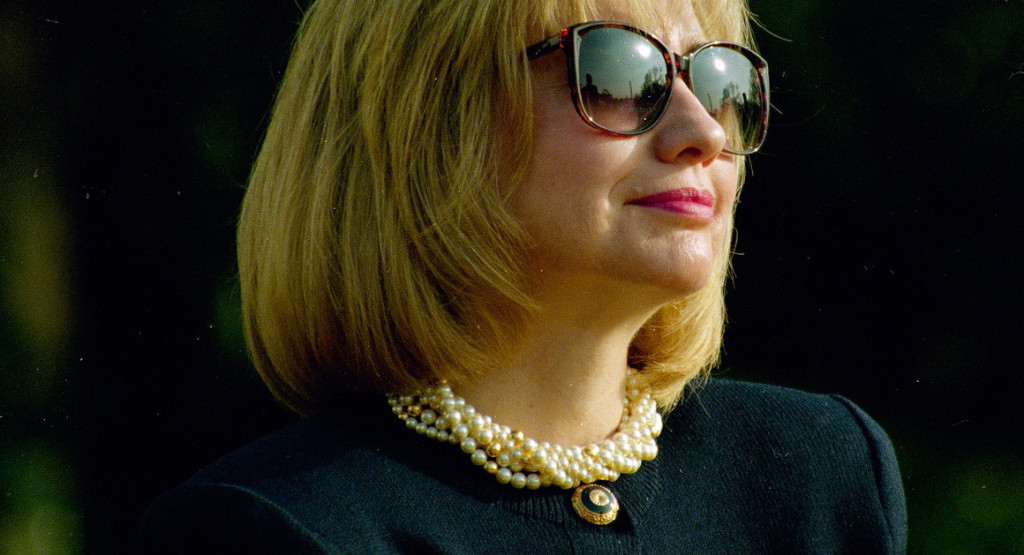
GRUNT: THE CURIOUS SCIENCE OF HUMANS AT WAR By Mary Roach

I enjoy well written books about science. Last month, I raved about Hope Jahren’s brilliant Lab Girl and now, in an embarrassment of riches, we have Mary Roach’s quirky, Grunt. Mary Roach pursues science in her own unique way. Panic, exhaustion, heat, and noise are the enemies of soldiers. Roach hangs out with Marines and snipers to learn their secrets. And we find out why shrimp are more dangerous to sailors than sharks. If you’re in the mood for a very different viewpoint on life in the military, Grunt will surprise and delight you. GRADE: A
TABLE OF CONTENTS:
BY WAY OF INTRODUCTION
1.Second Skin: What to wear to war
2.Boom Box: Automotive safety for people who drive on bombs
3.Fighting by Ear: The conundrum of military noise
4.Below the Belt: The cruelest shot of all
5.It Might Get Weird: A salute to genital transplants
6.Carnage Under Fire: How do combat medics cope?
7.Sweating Bullets: The war on heat
8.Leaky SEALs: Diarrhea as a threat to national security
9.The Maggot Paradox: Flies on the battlefield, for better and worse
10.What Doesn’t Kill You Will Make You Reek: A brief history of stink bombs
11.Old Chum: How to make and test a shark repellent
12.That Sinking Feeling: When things go wrong under the sea
13.Up and Under: A submarine tries to sleep
14.Feedback from the Fallen: How the dead help the living stay that way
ACKNOWLEDGEMENTS
BIBLIOGRAPHY
THE JASON BOURNE TRILOGY [Blu-ray]

I pre-purchased my ticket to Jason Bourne which opens on Friday. This is the fourth movie based very loosely on the Robert Ludlum suspense novels. I’m watching the Blu-ray box set to prepare for the new installment in this spy series. Matt Damon plays Jason Bourne, a CIA agent with memory loss. Doug Liman directed The Bourne Identity (2002), The Bourne Identity is my least favorite movie in the series because Damon muddles around much of the time and then springs into sporadic action. Paul Greengrass directed The Bourne Supremacy (2004), The Bourne Ultimatum (2007) and now the new Jason Bourne (2016). Tony Gilroy co-wrote each film except for Jason Bourne. I’m a big fan of Paul Greengrass’s work. I first noticed Greengrass with his skilled direction of United 93 (2006) (he won the BAFTA Award for Best Director as a result and also received an Academy Award for Best Director nomination). I also liked Greengrass’s work on Green Zone (2010) and Captain Phillips (2013). Both The Bourne Supremacy and The Bourne Ultimatum are fast-paced thrillers that I really enjoyed. Damon and Greengrass were reluctant to make another Jason Bourne movie, but they were convinced that the character had more story to explore. Have you seen the Jason Bourne movies? Do you have a favorite? GRADE: The Bourne Identity: B; The Bourne Supremacy: A-; The Bourne Ultimatum: A.
HOW TO WRITE LIKE TOLSTOY: A JOURNEY INTO THE MINDS OF OUR GREATEST WRITERS By Richard Cohen
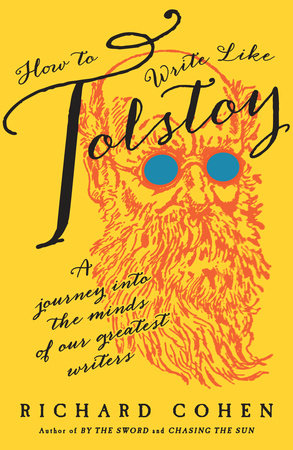
I love books like Richard Cohen’s How to Write Like Tollstoy because of all the great quotes and literary stories Cohen shares. As an editor, Richard Cohen worked on books with Kingsley Amis, Anthony Burgess, Sebastian, Faulks, Jean Auel, Fay Weldon, John Le Carre, A. Alvarez, Victoria Glendinning, Richard Holmes, V. S. Pritchett, Hilary Spurling, Madeleine Albright, Simon Winchester, Vanessa Redgrave, Dian Fossey, studs Terkel, John Keegan, and Jonathan Spence just to name a few. Cohen also taught writing courses at the university level (although he debates whether creative writing can taught). And, on top of all that, Richard Cohen has read widely and well. Every page of How to Write Like Tolstoy features quotes and comments on books of all sorts. Nabokov, Jane Austen, and Stephen King can show up on the same page.
“I feel sorry for novelists when they have to mention women’s eyes: there’s so little choice. … Her eyes are blue: innocence and honesty. Her eyes are black: passion and depth. Her eyes are green: wildness and jealousy. Her eyes are brown: reliability and common sense. Her eyes are violent: the novel is by Raymond Chandler.” Julian Barnes wrote that witty passage. You’ll have dozens of equally cool insights in How to Write Like Tolstoy. Highly recommended! GRADE: A
TABLE OF CONTENTS:
Preface
1. Grab, Invite, Beguile: Beginnings 3
2. Circular Ruins: Creating Character 25
3. Stolen Words: Three Forms of Plagiarism 55
4. The Trick of It: Points of View 77
5. Says You: The Art and Craft of Dialogue 103
6. Secret Trapdoors: The Power of Irony 125
7. Grabbing Fiction by the Tale 143
8. Waves in the Mind: Rhythm in Prose Writing 159
9. “Just Like Zorro”: Writing about Sex 183
10. Vision and Revision Part 1 209
11. Vision and Revision Part 2 227
12. The Sense of an Ending 241
Acknowledgments 257
Notes 263
Index 295
Photo Credits and Permissions 321
Just Like Zorro Writing About Sex
183
QUENCH YOUR OWN THIRST: BUSINESS LESSONS LEARNED OVER A BEER OR TWO By Jim Koch
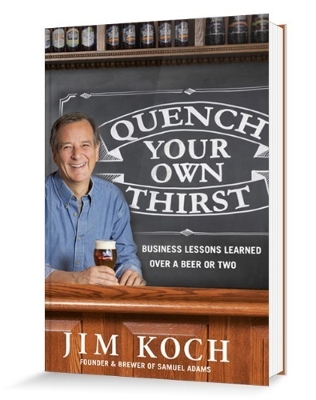
Jim Koch was a successful consultant, but he wasn’t happy. He wanted to start his own business. Koch’s father and grandfather were brew-masters. So Koch quit his job and decided to start a brewery back in the early 1980s. Everyone told Koch he was crazy and would fail. Koch ignored all this negative advice and built a craft beer called Sam Adams. And now, decades later, Koch owns a billion dollar company. I found Jim Koch’s story moving and inspiring. The details of Koch building his business and dealing with problems hold lessons for those who want to start their own businesses. I’m going to use Quench Your Own Thirst in my ENTREPRENEURSHIP class this Fall Semester. GRADE: A
TABLE OF CONTENTS:
Introduction
PART I: Mashing
1. Blow It Up
2. Turn Your Receiver On
3. Open Yourself to “Holy Shit”
4. Make It Better or Cheaper
5. Do the Math
6. Avoid “Smart” Investors
7. Look Hard for Talent. Then Look Again
8. The Best Marketing Plan Ever
9. Find Your Yoda
10. Sacred Cod Boston Lager?
11. The Difference Between Sex and Masturbation
PART II: Boiling And Cooling
12. String Theory
13. “I Make My Money When I Buy the Goods”
14. The Strength of the Weak
15. The Golden Rule of Selling
16. My Best Sales Call of All Time
17. You Can’t Hear with Someone Else’s Ears
18. You Don’t Climb a Mountain to Get to the Middle
19. Give Them Something to Talk About
20. When You’re Right, Push It
21. Take the Giant Turds in Stride
PART III: Fermenting
22. Grow Skinny
23. If You’re Not the Lead Dog, the Scenery Never Changes
24. Launch Your Long Shots
25. There’s No Pretending About Quality
26. The Most Expensive Education You’ll Ever Get
27. We Take Beer Seriously, but Not Ourselves
28. The CEO Flies Coach
29. The “Fuck You” Rule
30. Always Raise the Average
31. Make Your Public Offering Public
32. Learn to Take a Punch
PART IV: Maturation
33. Grow When You’re Not Growing
34. Endure the Endings
35. Mind Your Protection
36. If the Sun Is Shining, Look Out for an Avalanche
37. The Recall: Our Best Crisis Ever
38. Let Helga Do the Talking
PART V: Packaging
39. Practice Fingerspitzengefu¨hl
40. Stop Painting and Start Partnering
41. Welcome the Dude with the Gold-Painted Toenails
42. Quench Your Own Thirst
Acknowledgments
Jim’s Bookshelf
Notes
Index